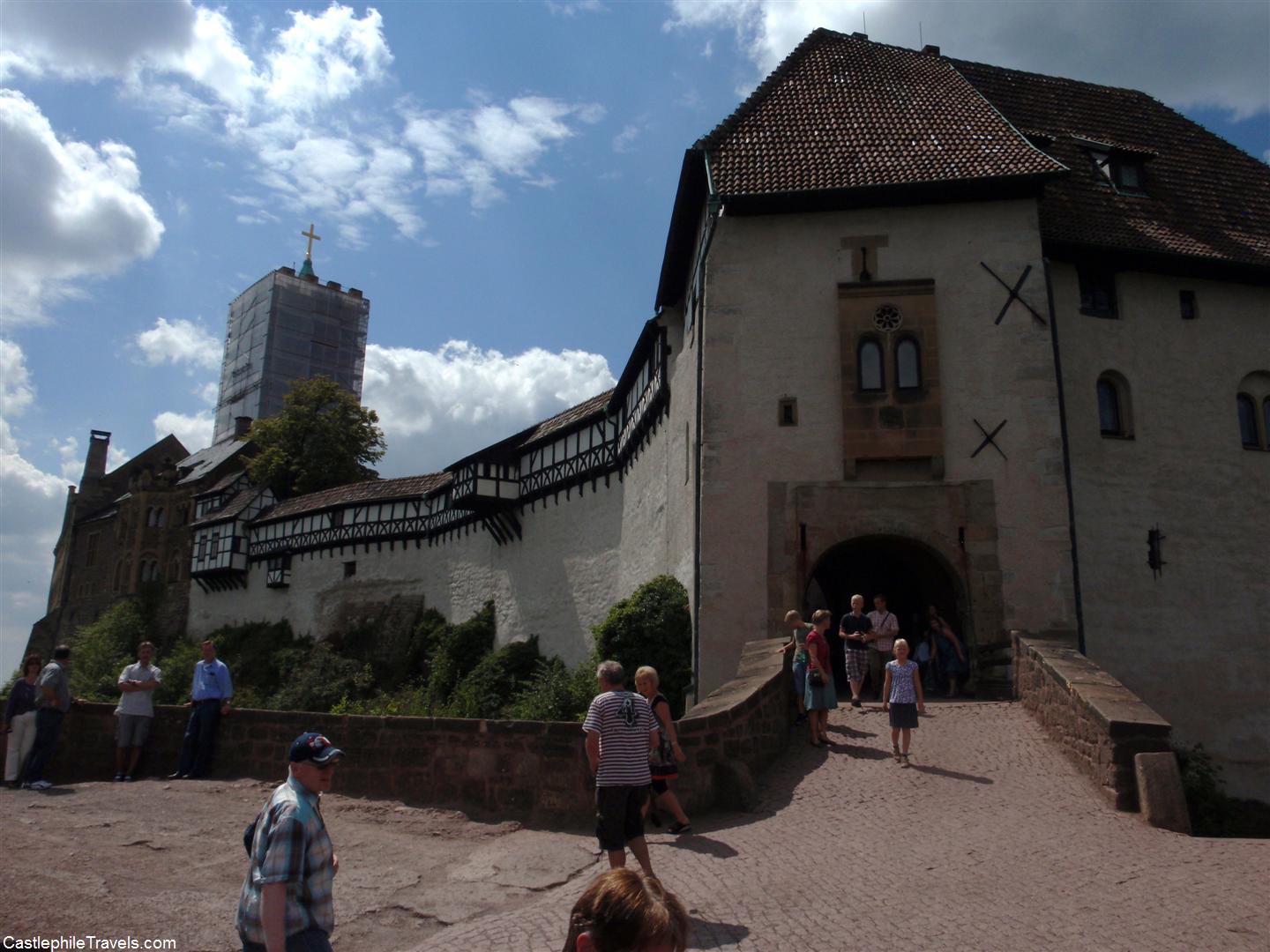
The Wartburg is a UNESCO World Heritage Site and if its walls could speak they would draw their tales from hundreds of years of history and talk of people who passed through the Wartburg from Saint Elisabeth, to Wagner and Goethe, to Martin Luther. From spurious beginnings, the castle has been added to throughout the centuries, and was much admired by King Ludwig II, who took influences from the Wartburg to design Neuschwanstein Castle.
The Stolen Mountain
The Wartburg’s history begins with Ludwig Springer, who came across the hill that the Wartburg now stands on, and decided it would be an ideal location for a fortress. He said: “Wart Berg! Du sollst mein Burg sein!” (Wait, mountain! You will be my fortress!”) and went off to make it happen.
Unfortunately for Springer, he didn’t own the land. But where there is a will there is always a way. Springer transported soil from his own lands, deposited it on the hill, and then began building the fortifications on top of that – therefore no one could dispute that he had built the Wartburg on his own land.
The Exterior of the Wartburg
The exterior of the Wartburg shows the different architectural influences utilised over the years. There are also several lookouts over the town of Eisenach, the surrounding countryside and the Thuringian Forest. From the Wartburg you can see the Burschenschaftsdenkmal, a monument to students who lost their lives fighting for a united Germany in the late nineteenth century.
The Courtyard
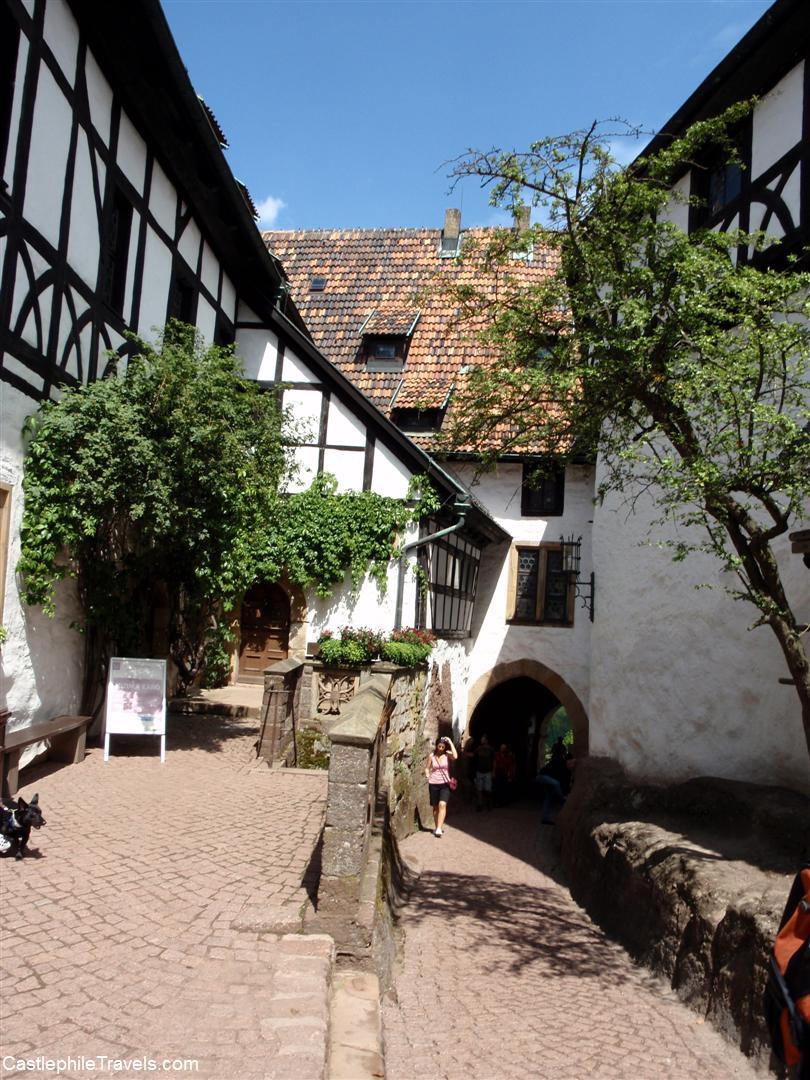
After going through the main gate, you enter the charming cobble-stoned inner courtyard, where you can buy tickets for the guided tours and also souvenirs at the castle’s gift shop. The courtyard leads out to the rear of the castle, where the Knight’s Baths (a small pool) is located.
The Knight’s Room and the Kitchen
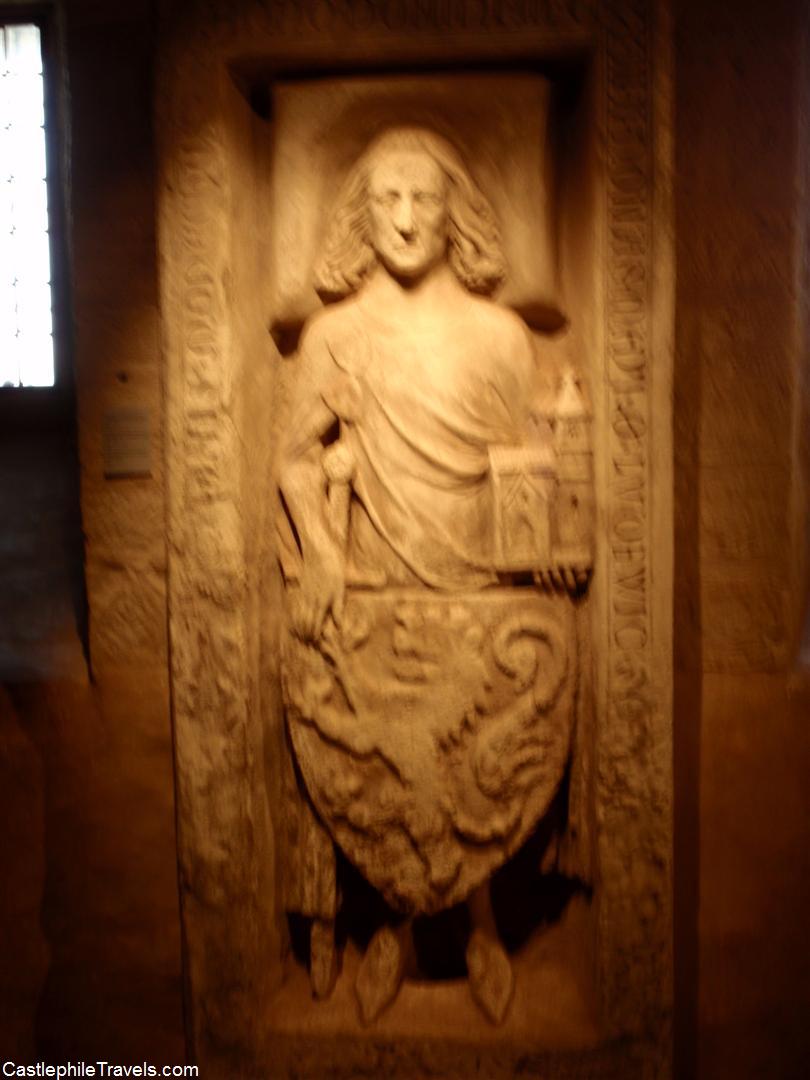
The Knight’s Room and adjoining Dining Hall date back to the 12th century, and are sparsely furnished. The Knight’s Room is the first room you see on the guided tour of the Wartburg. The adjoining Dining Hall displays a kitchen and table dating from the Middle Ages.
The Elisabeth Bower
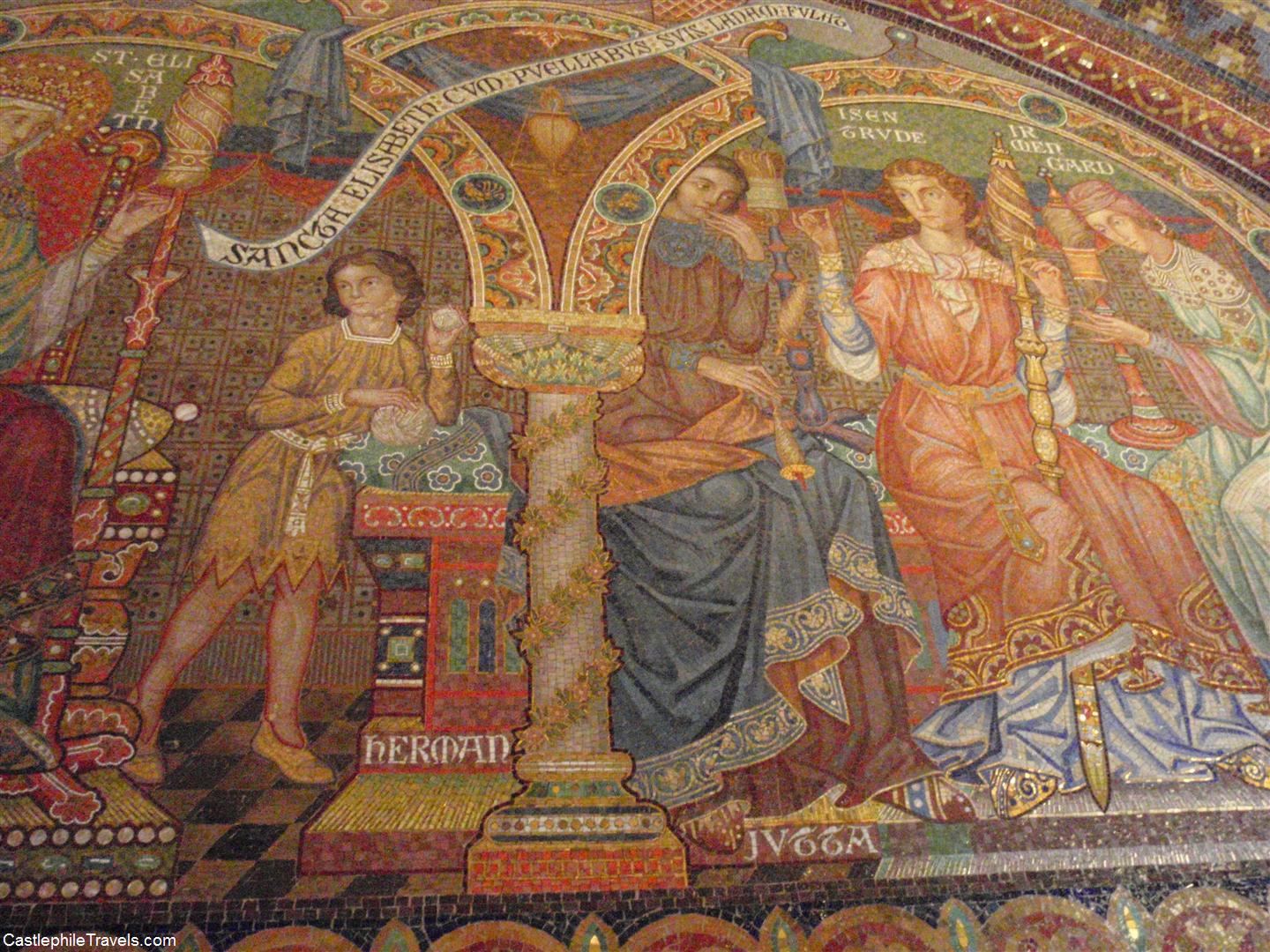
One of the most spectacular rooms in the Wartburg is the Elisabeth Bower. Named after Saint Elisabeth, a Hungarian princess sent to live in the Wartburg during the thirteenth century, the walls and ceiling of the room consist of mosaics depicting the stories of the castle’s inhabitants. Although the mosaic is a more recent addition to the castle (it was done in the 1900s), it is a memorable sight.
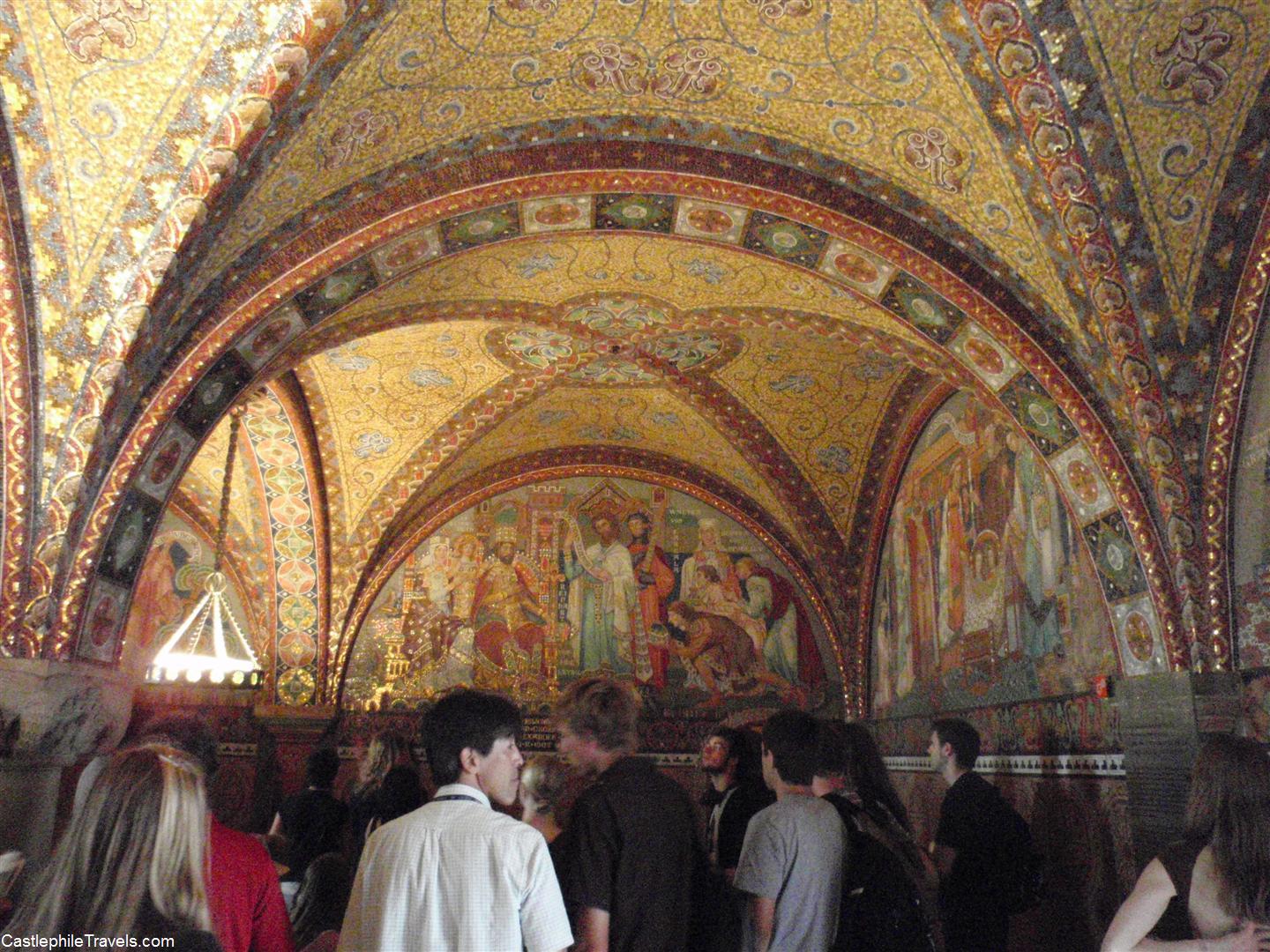
In the thirteenth century, Princess Elisabeth of Hungary was sent to live at the Wartburg at the age of four, where she would stay until she was old enough to marry her betrothed and become the castle’s Landgravine. She was canonised in 1235 for such events as the Miracle of the Roses, which is depicted in paintings in the Elisabeth Hallway. Upon being caught by her disapproving brother-in-law taking bread to the poor at the local hospital, she was questioned about what was in her basket. Elisabeth replied “flowers”. When the basket was uncovered, the bread that had originally been put in the basket had indeed turned into roses.
The Singer’s Hall
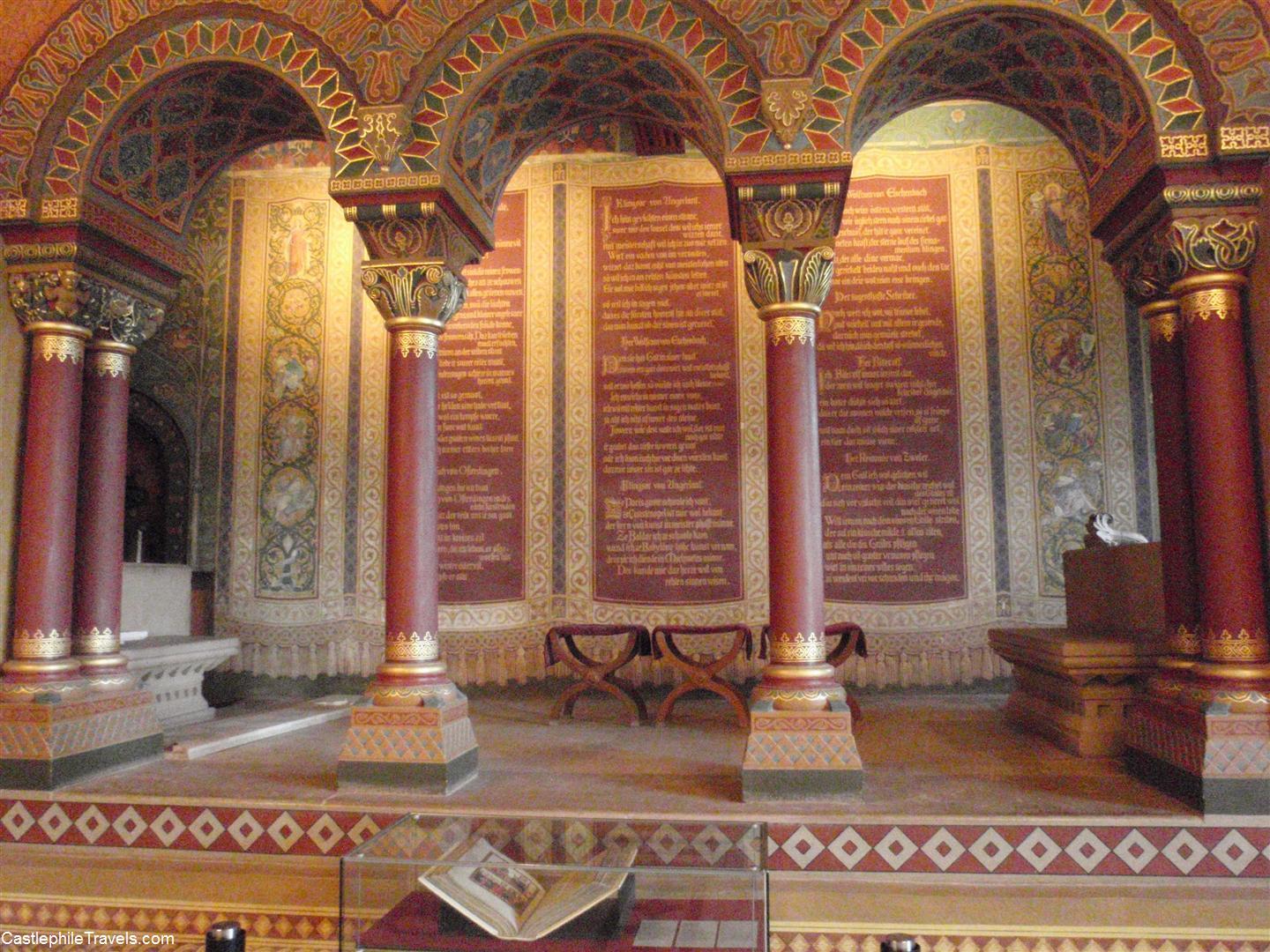
If you’ve visited Neuschwanstein, this room may look familiar. Upon his visit to the Wartburg, King Ludwig II admired the Singer’s Hall so much that he had a replica (though on a larger scale!) added to his dream castle. A tapestry depicts the legend of the minstrel competition held in this hall, where the loser’s penalty was death.
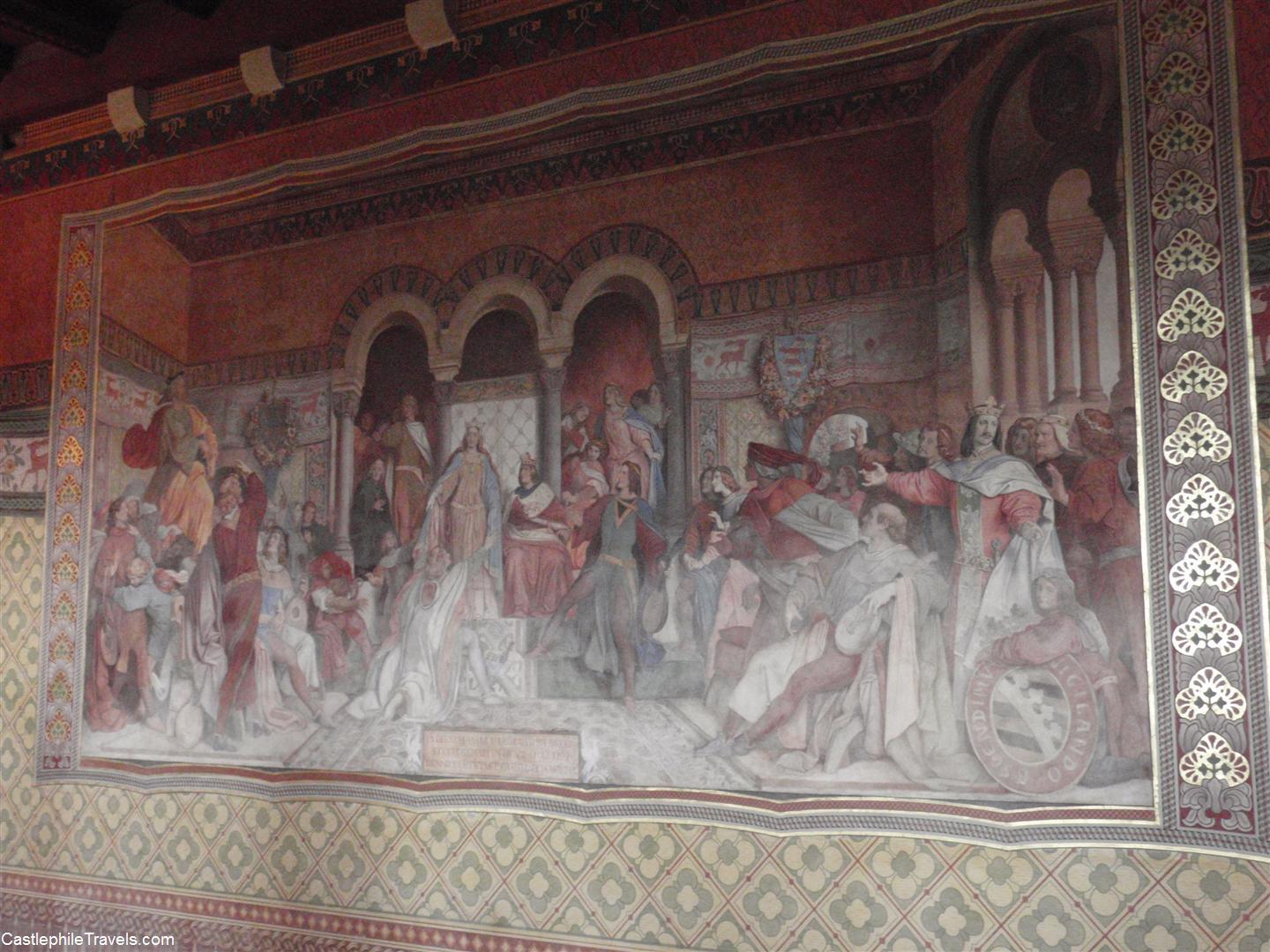
Adapted by Wagner for his opera Tannhäuser and not confirmed to be out of the realm of legend, the singer’s competition at the Wartburg was a battle between six minstrels whose aim was to entertain the landgrave and his family. With the penalty for losing being death, each singer praised the landgrave in the hopes of winning his approval. One, however, decided against this scheme and sang about the Duke of Austria instead. This earned him defeat and he risked death until the landgravine appealed for him. The contest was agreed to be re-scheduled for a year’s time. This time, an unbiased judge was brought in, and no one was executed for losing the contest. The competition is said to have taken place in the Singer’s Hall, where a large wall painting depicts the event.
The Festival Hall
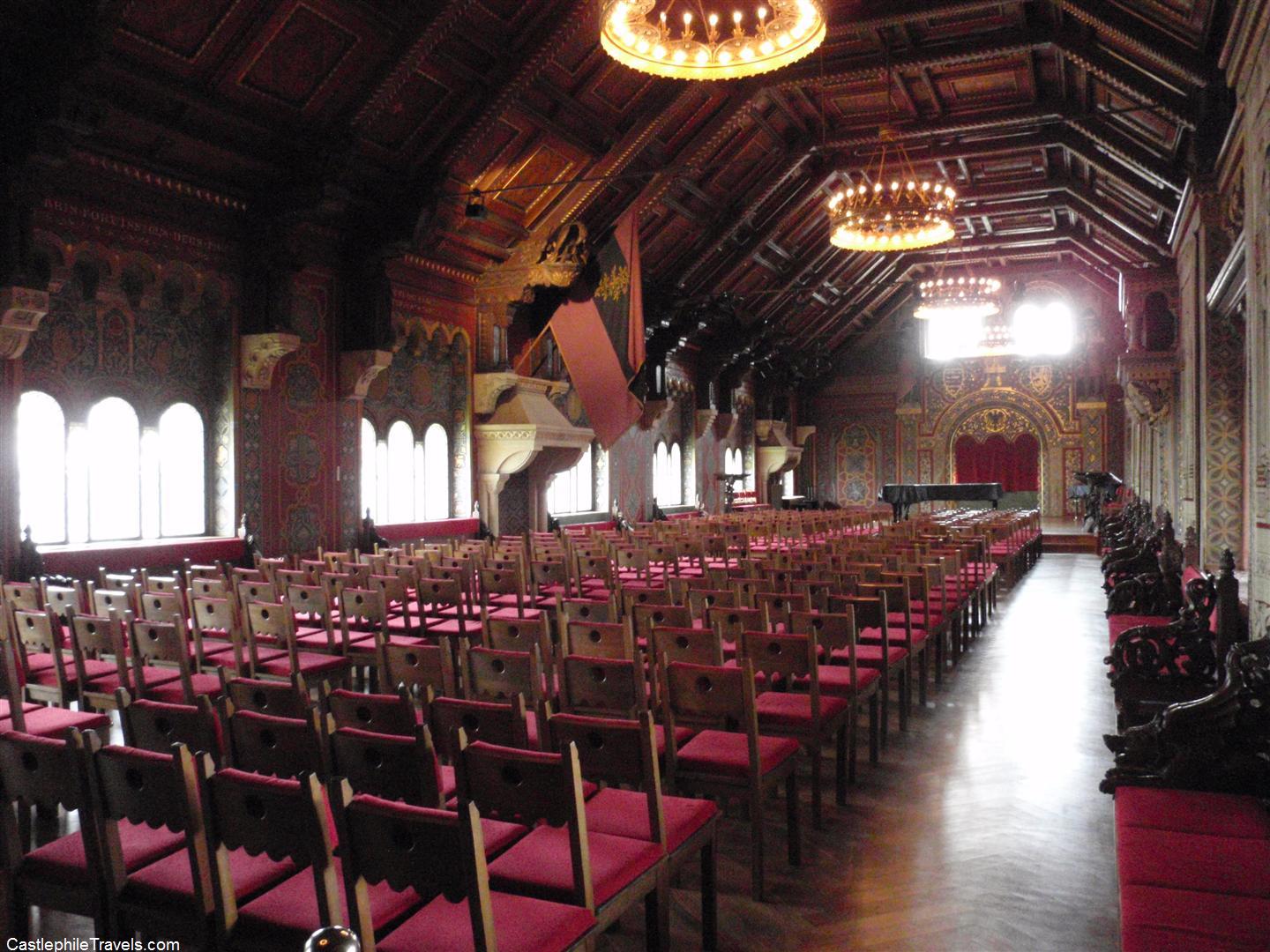
The final room in the tour is the Festival Hall. Originally used as a banqueting room, the Festival Hall played host to student fraternities. These days, the large space is used for concerts and ceremonies, including the graduation ceremonies of the local schools.
The Museum
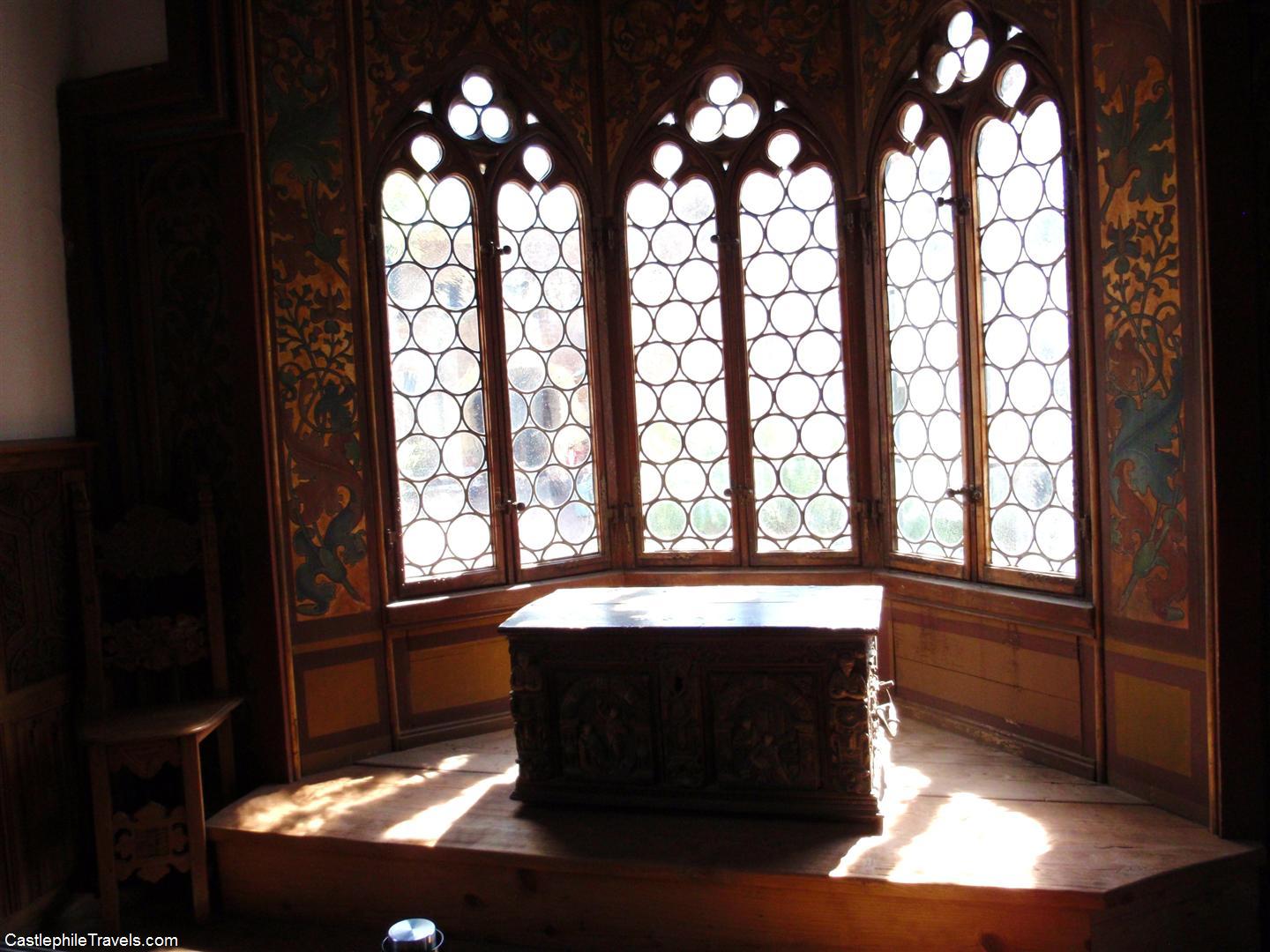
The tour finishes in the Festival Hall. You are then left to your own devices to explore the rooms of the museum – a collection of paintings, furniture, armour, weaponry and everyday household items. I loved the leadlight windows and curiosities on display. (Standing next to the suits of armour made me feel very tall!)
Martin Luther’s Buchstube
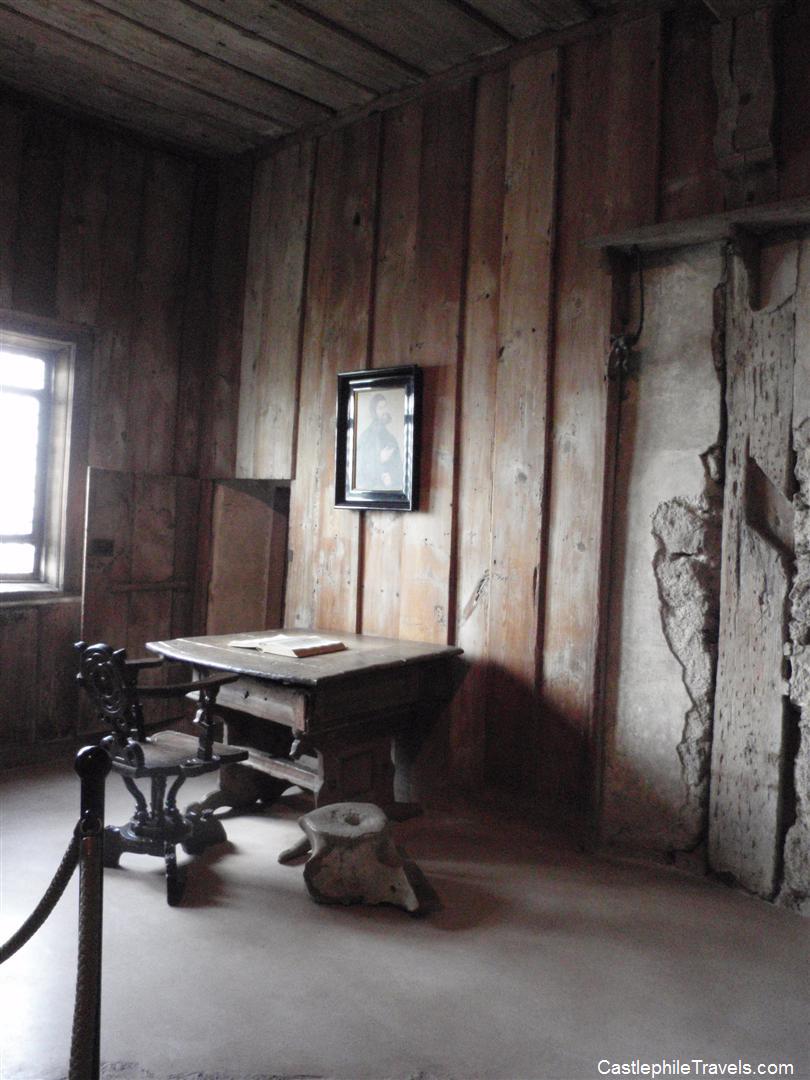
During the 15th century, while in exile, Martin Luther spent some time at the Wartburg. Here he worked on his ideas of the reformation, as well as projects that included translating the New Testament into German.
- It is free to walk around the castle grounds, but you have to pay for a guided tour in order to view the castle’s interior. Tours are offered in German and English, and show visitors through the minimalist rooms of the Knight’s Rooms and the Dining Hall, the beautifully decorated Elisabeth Bower, the Wartburg’s Chapel, and the Festival Hall, before allowing you to explore the Museum and rooms where Martin Luther stayed.
- To find out more about the Wartburg Castle, go to the Wartburg Castle’s official website
